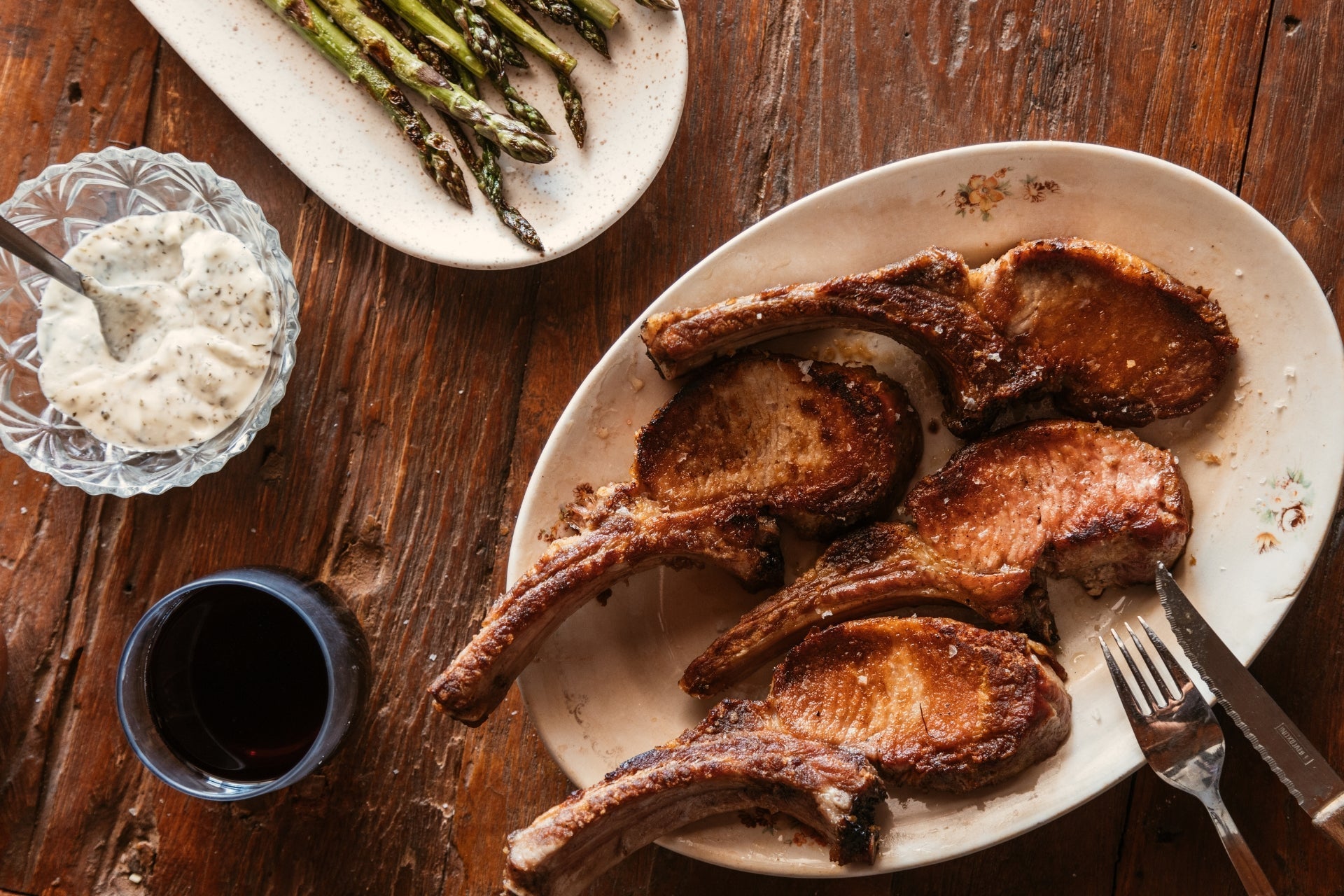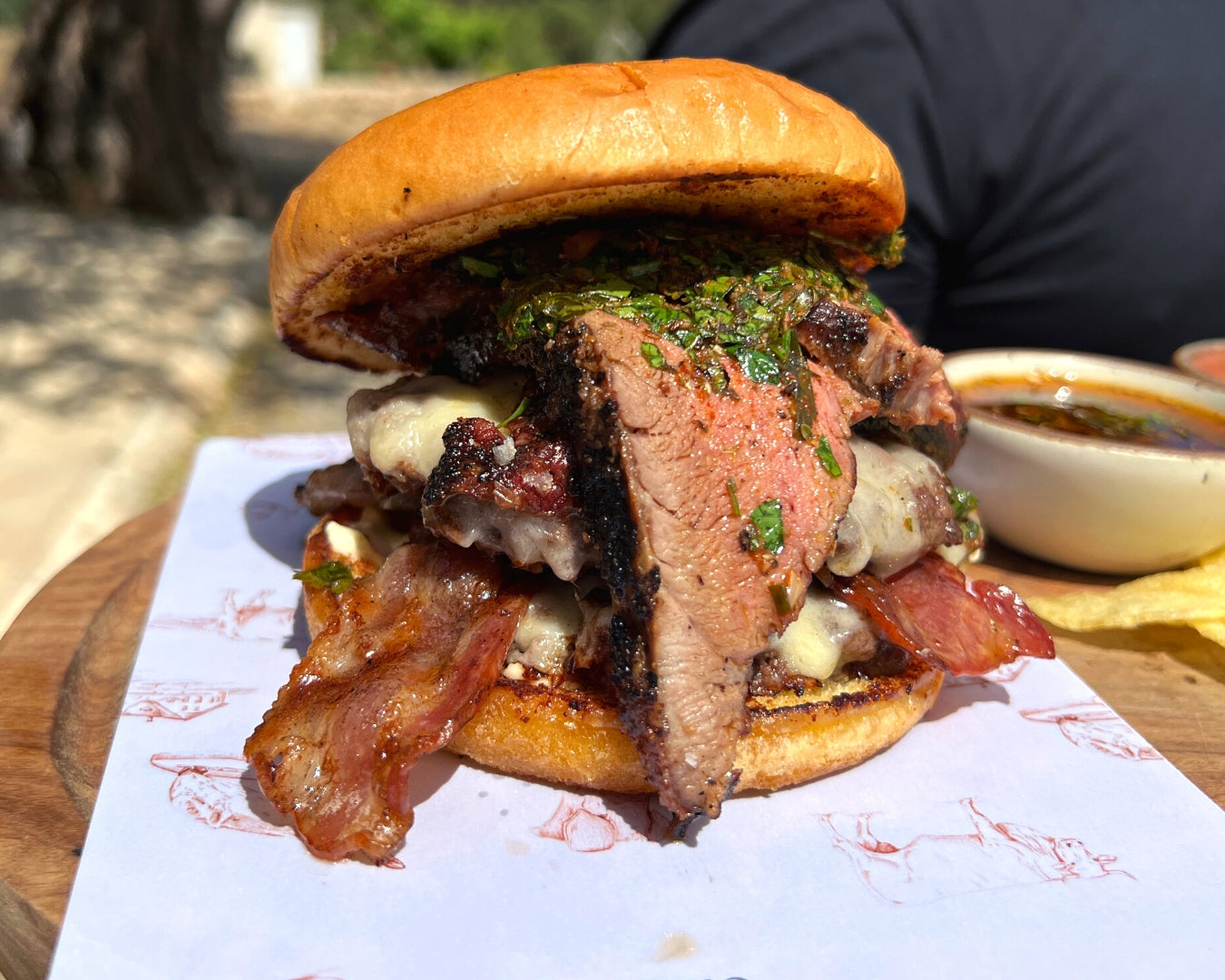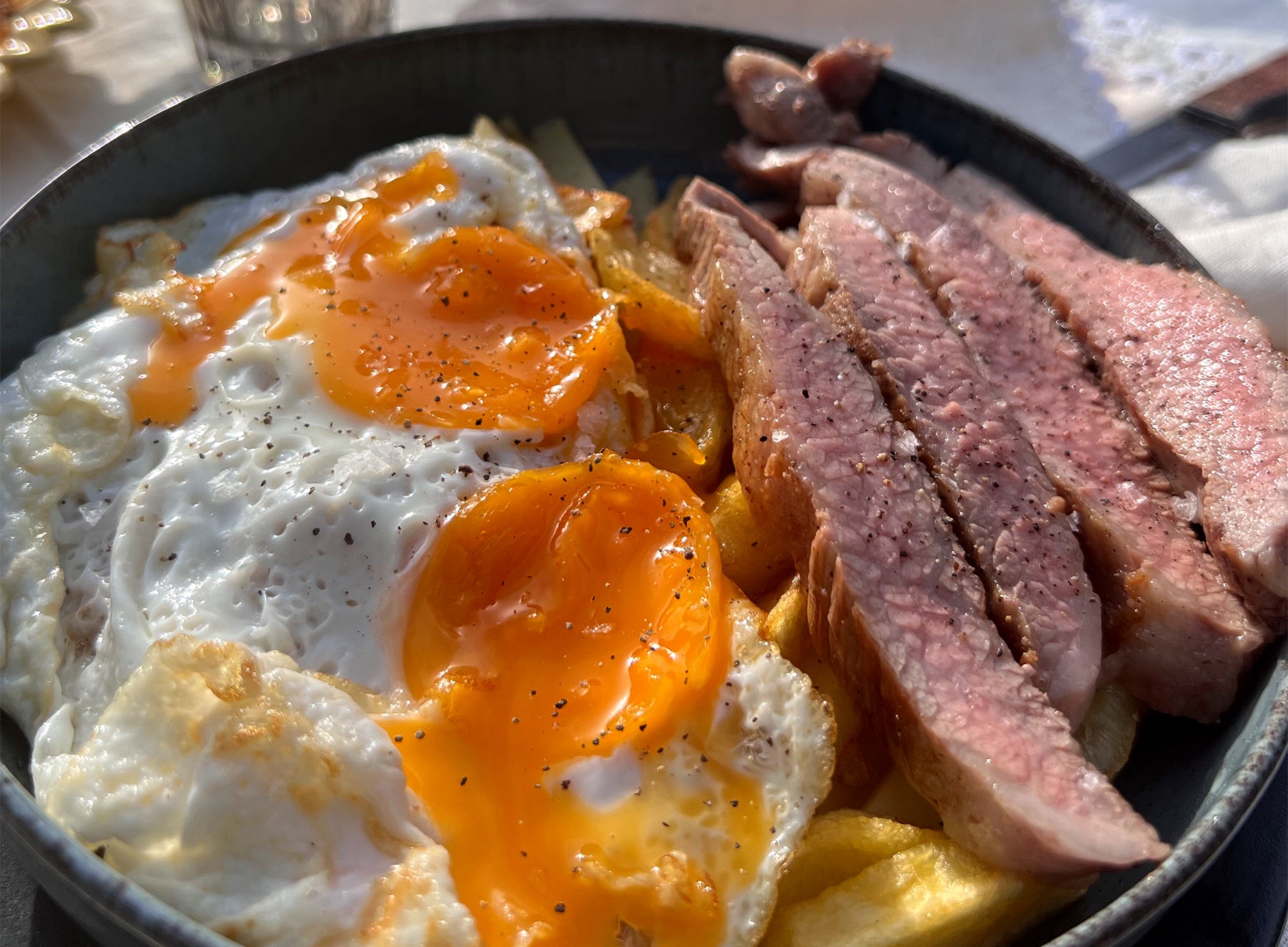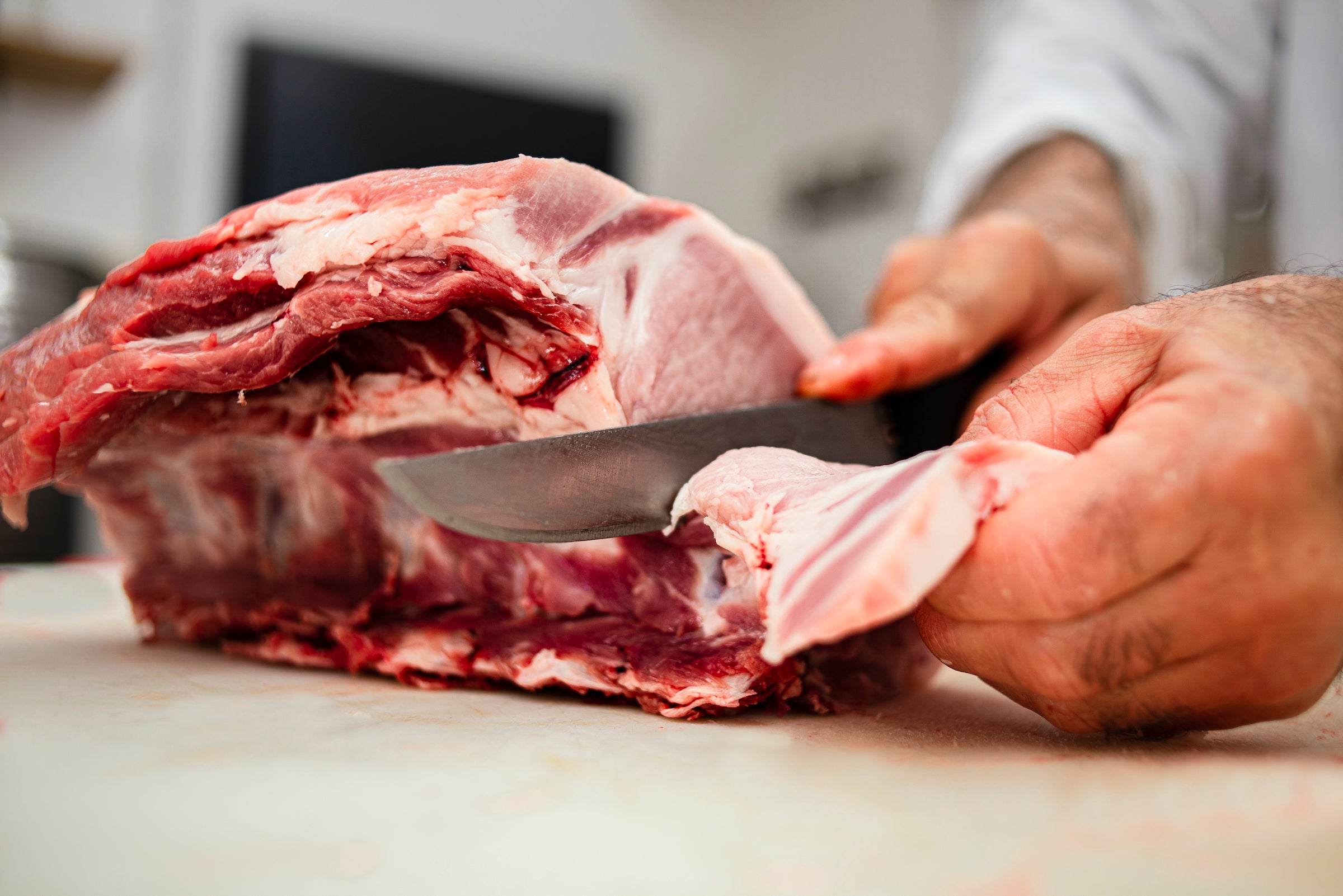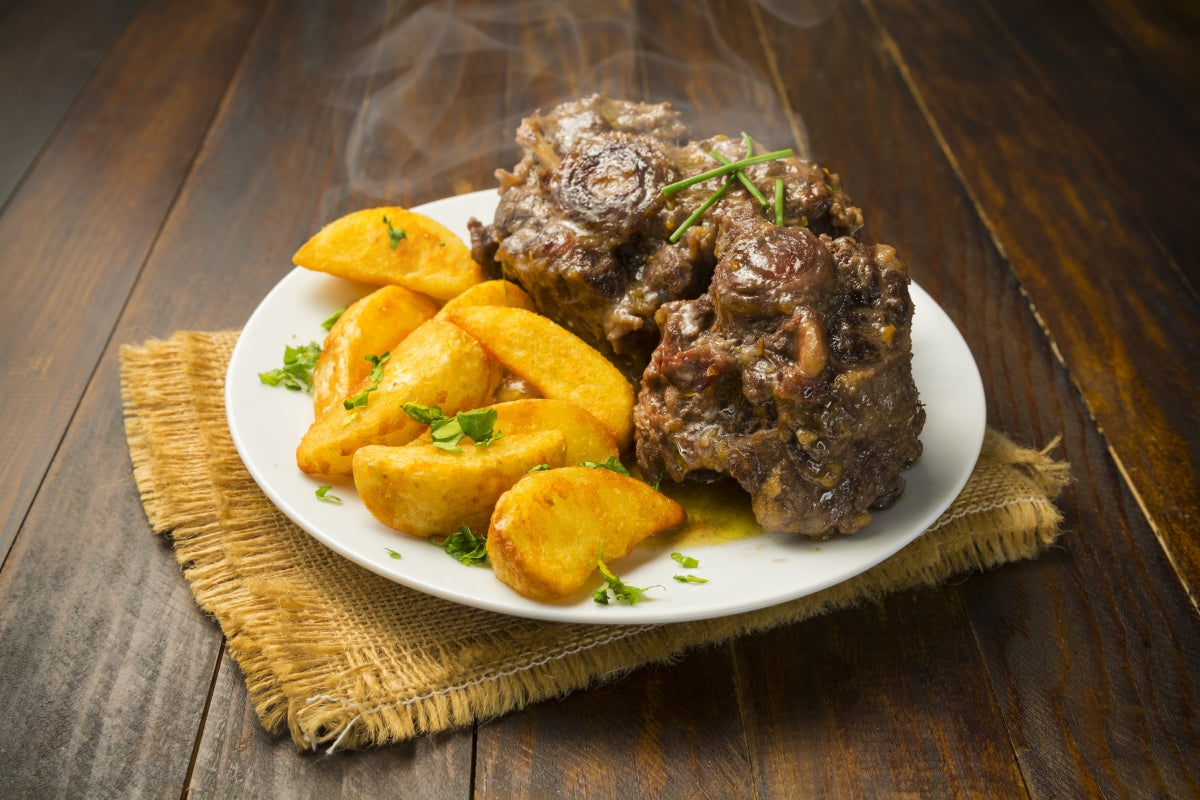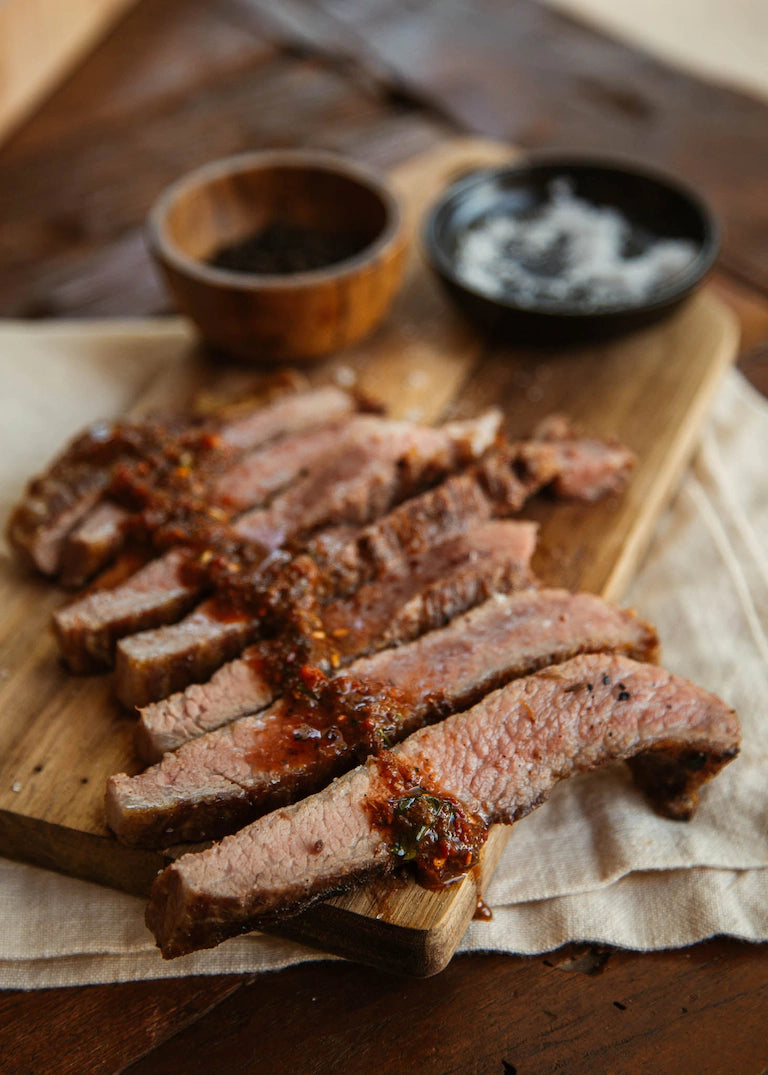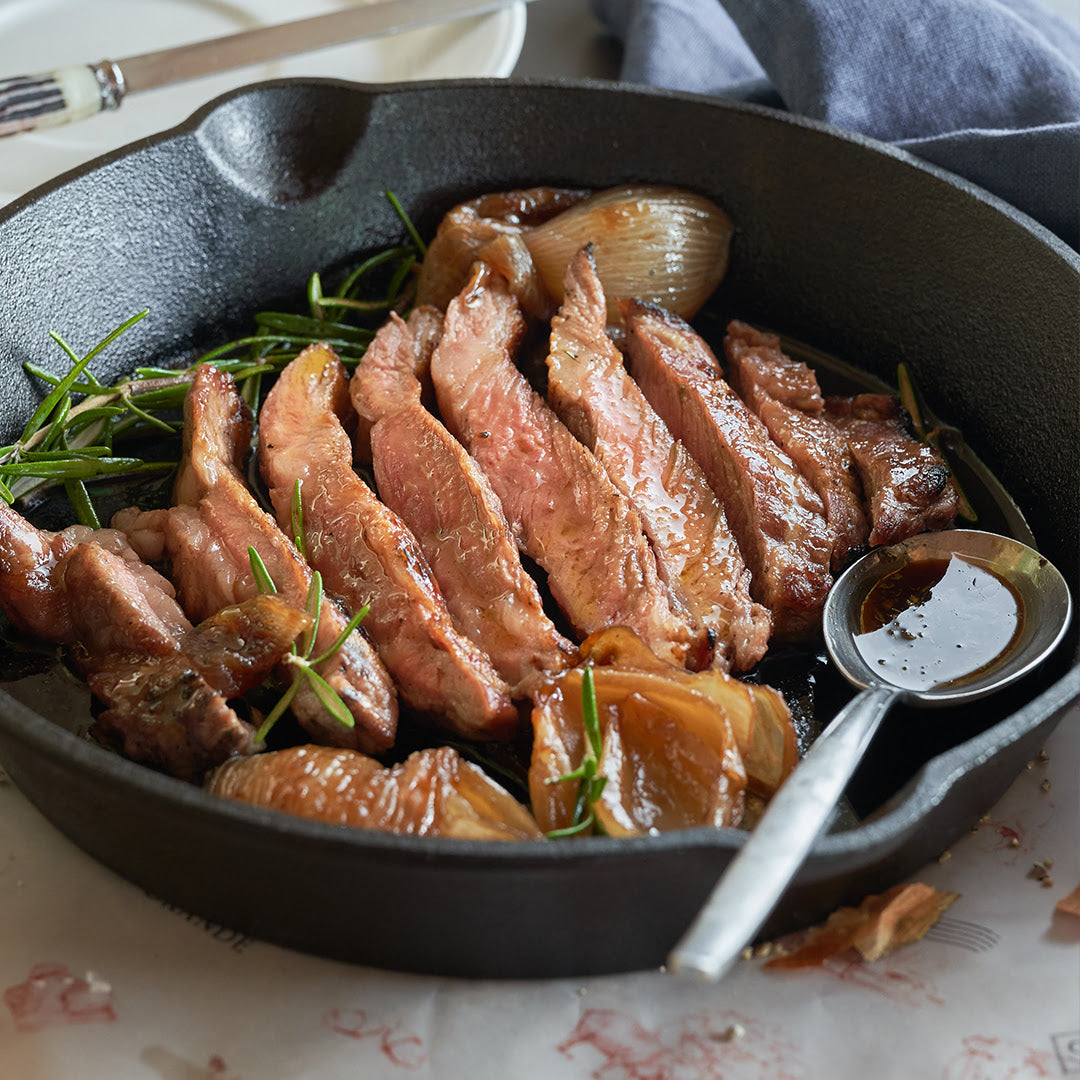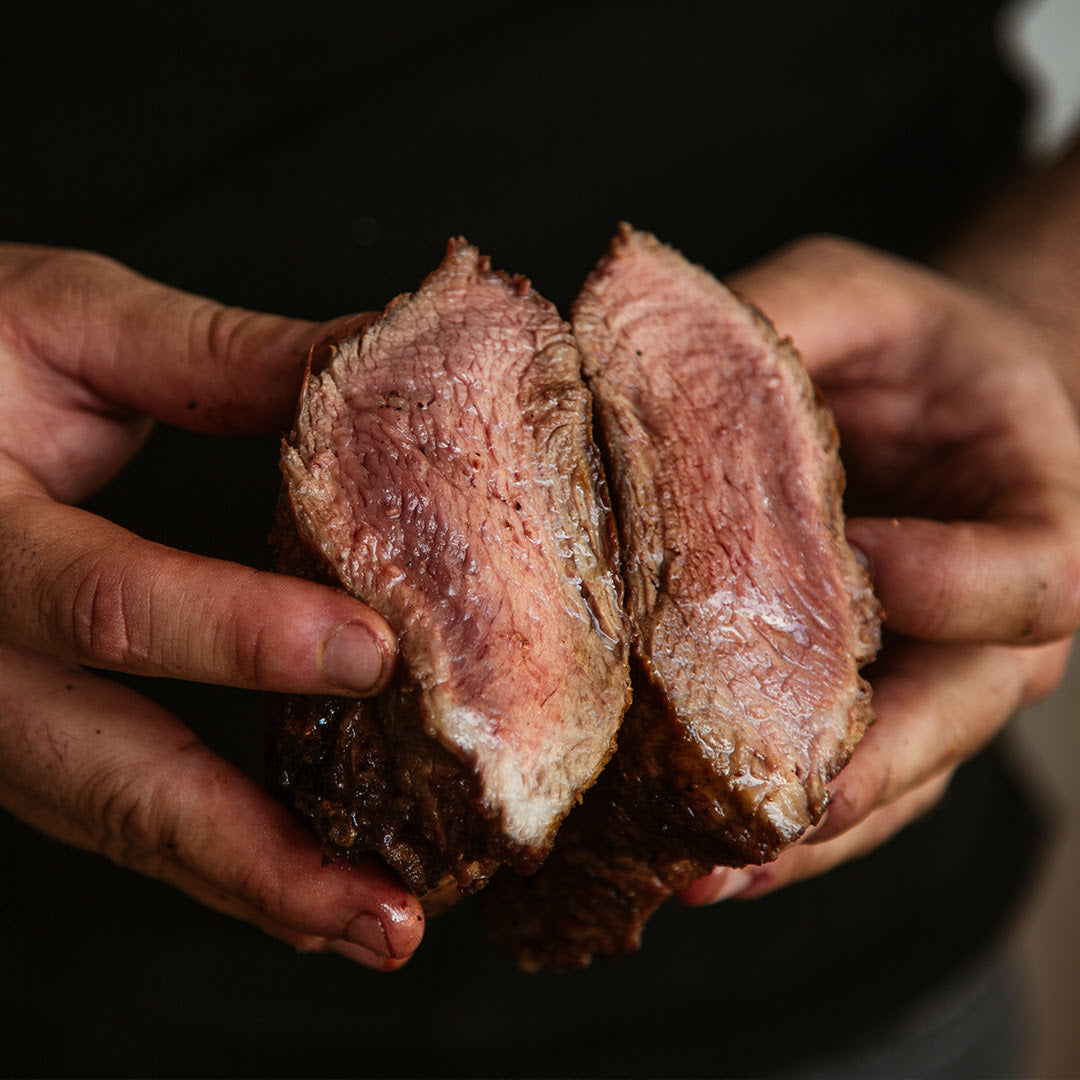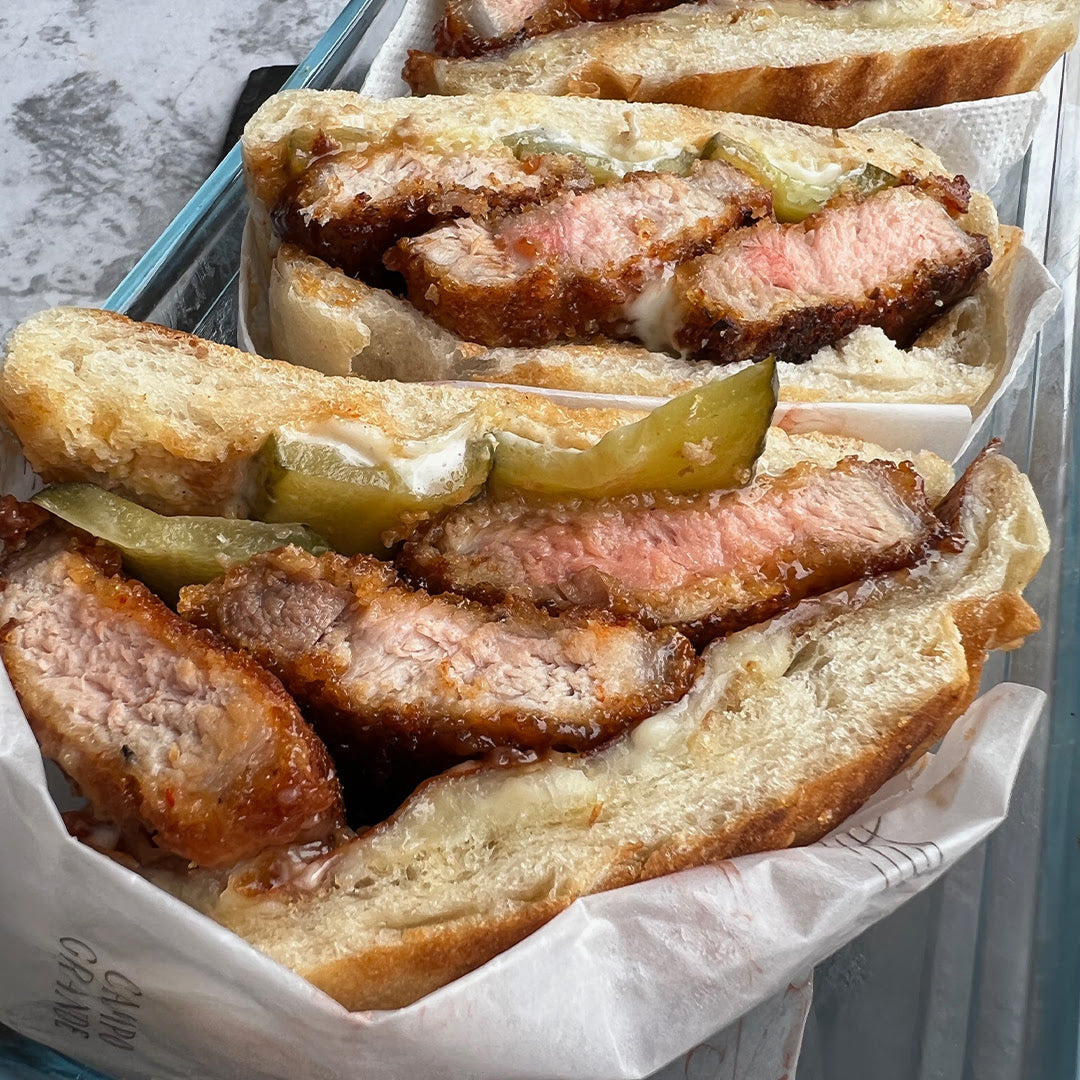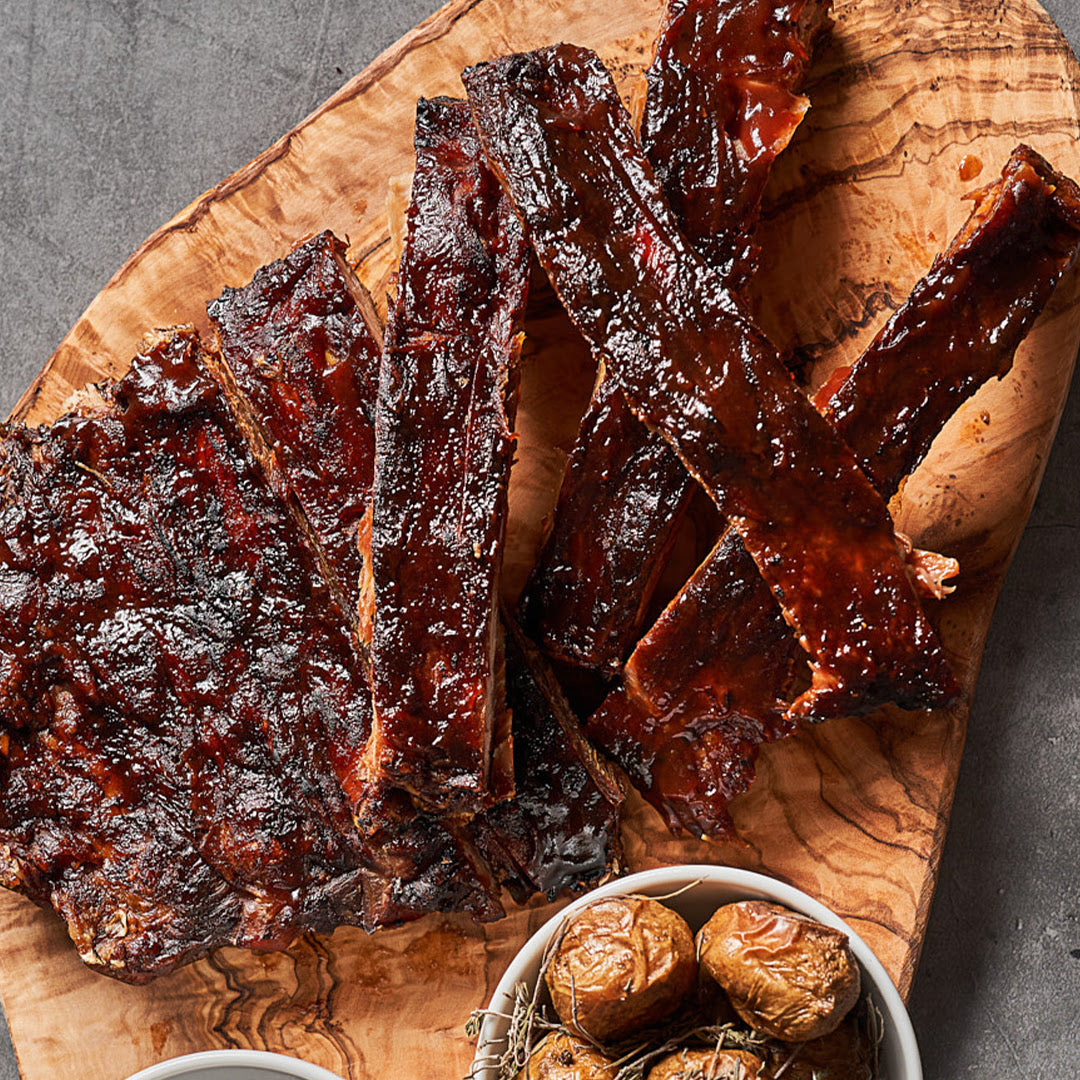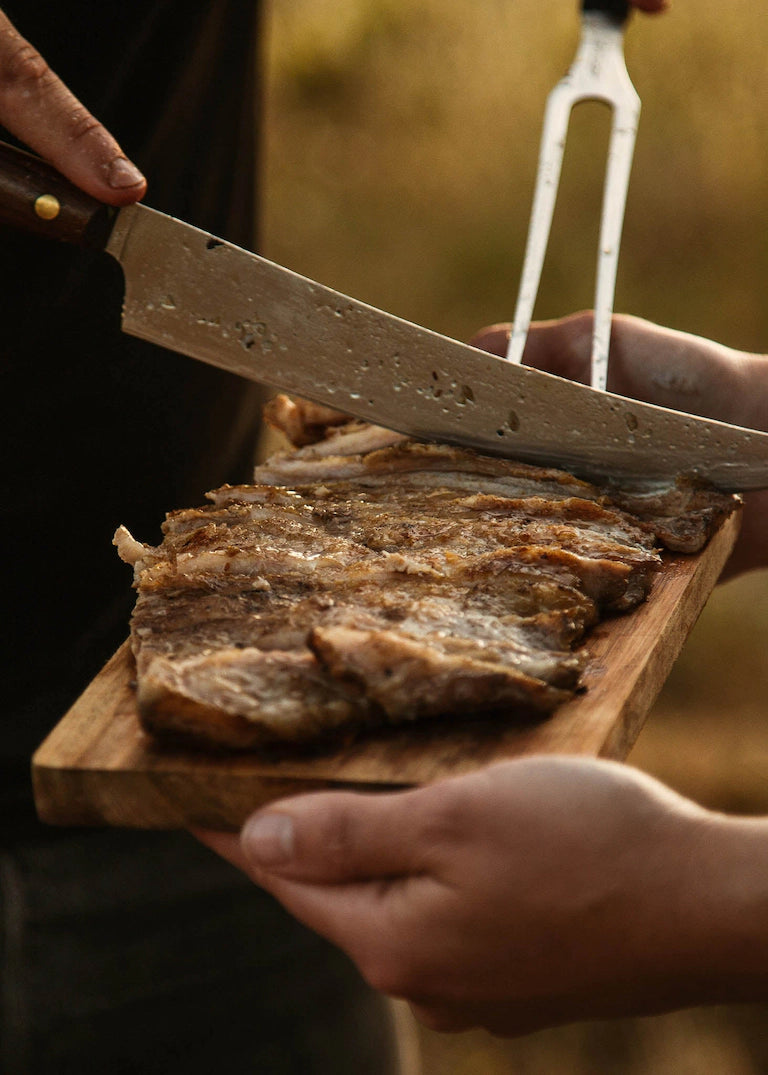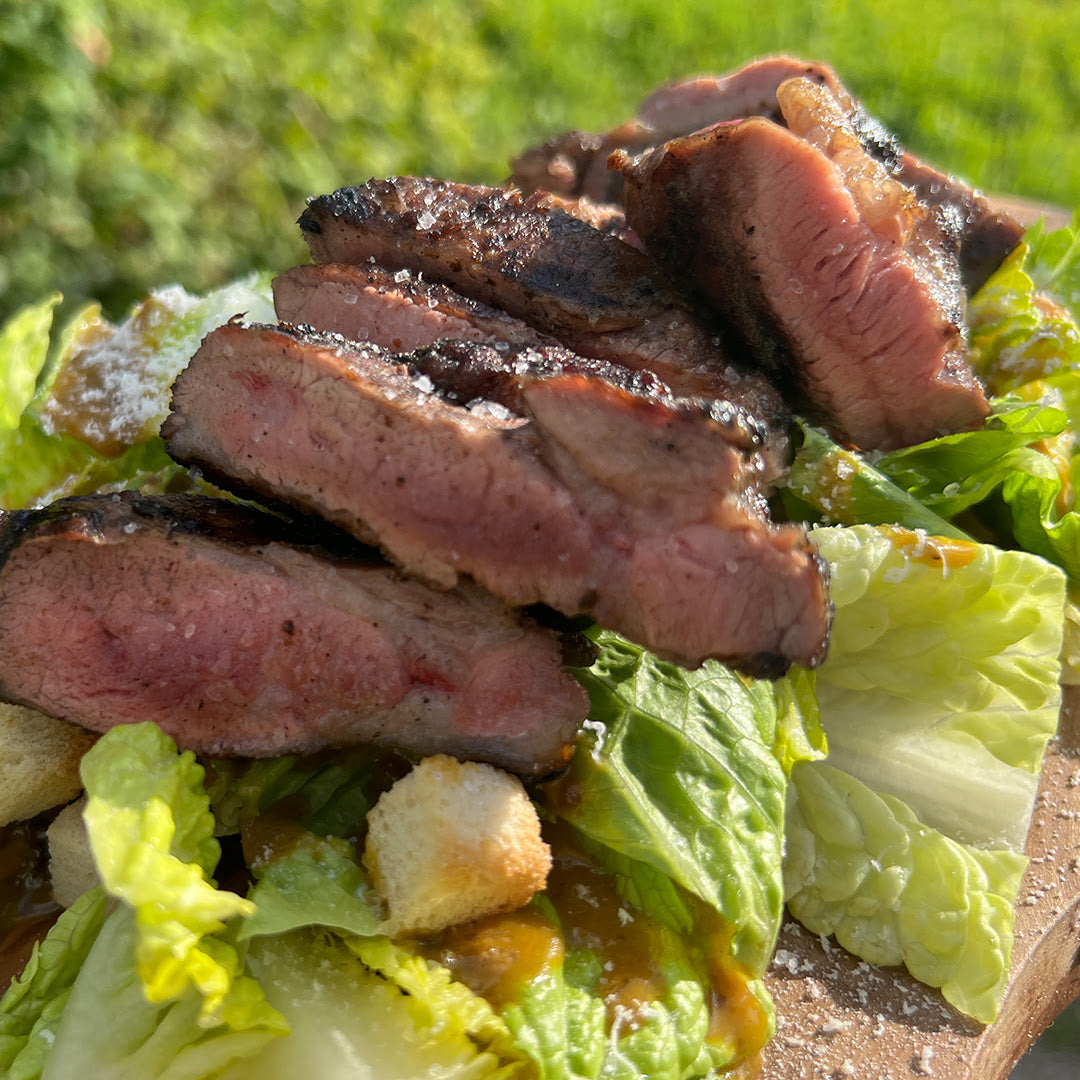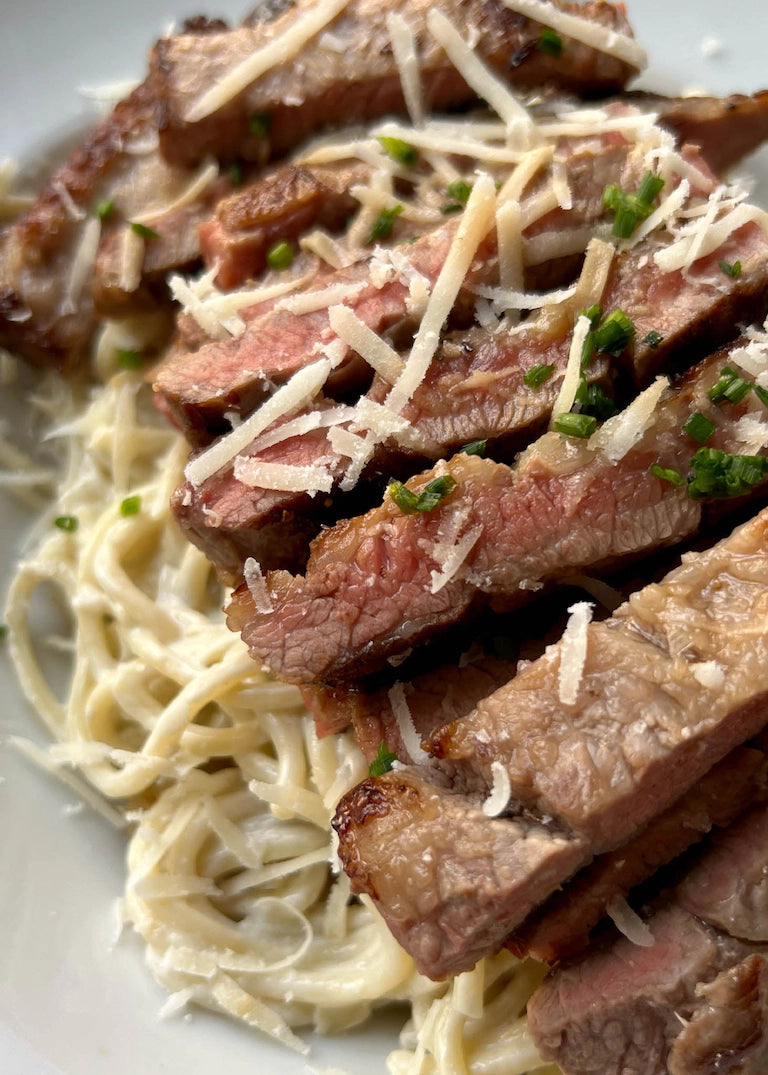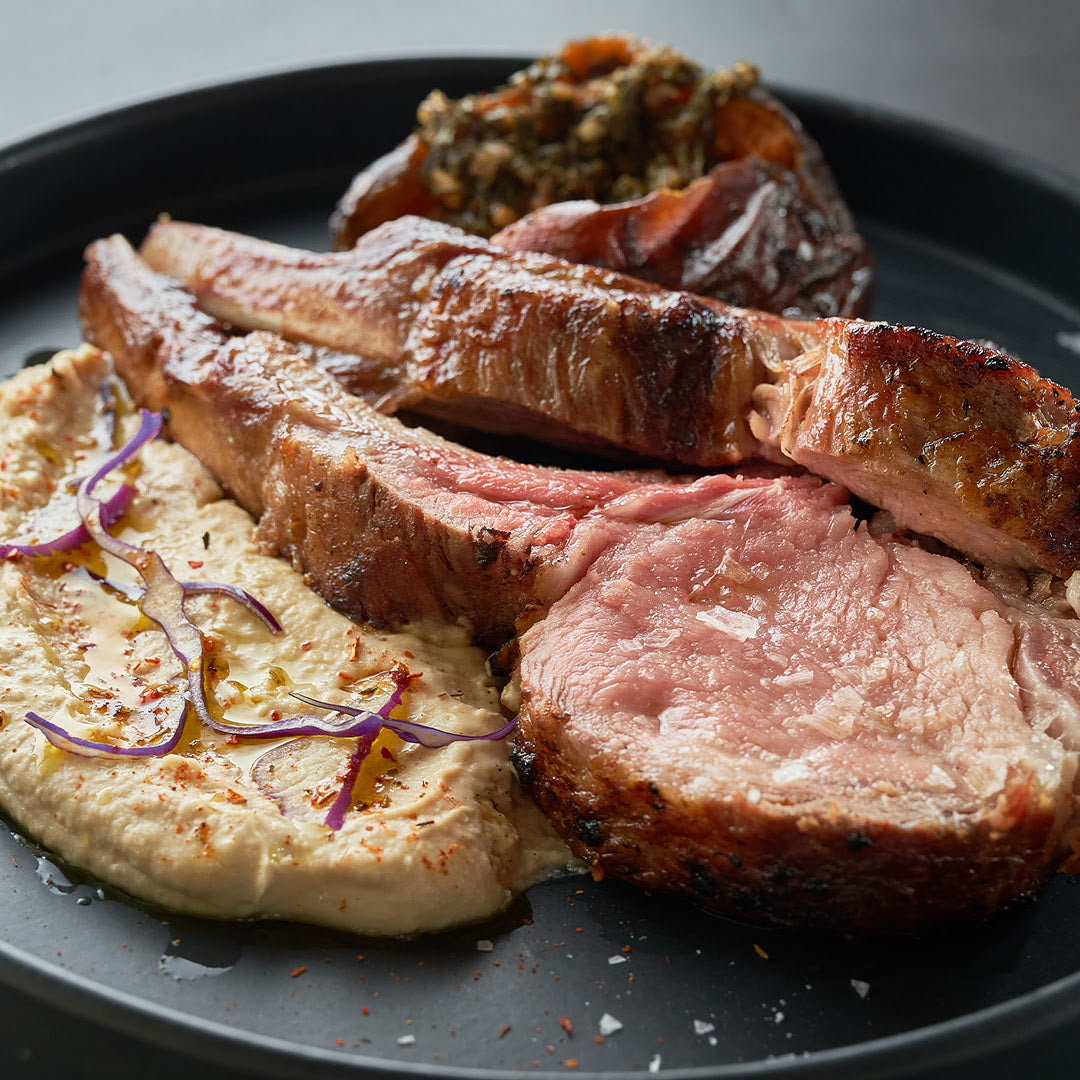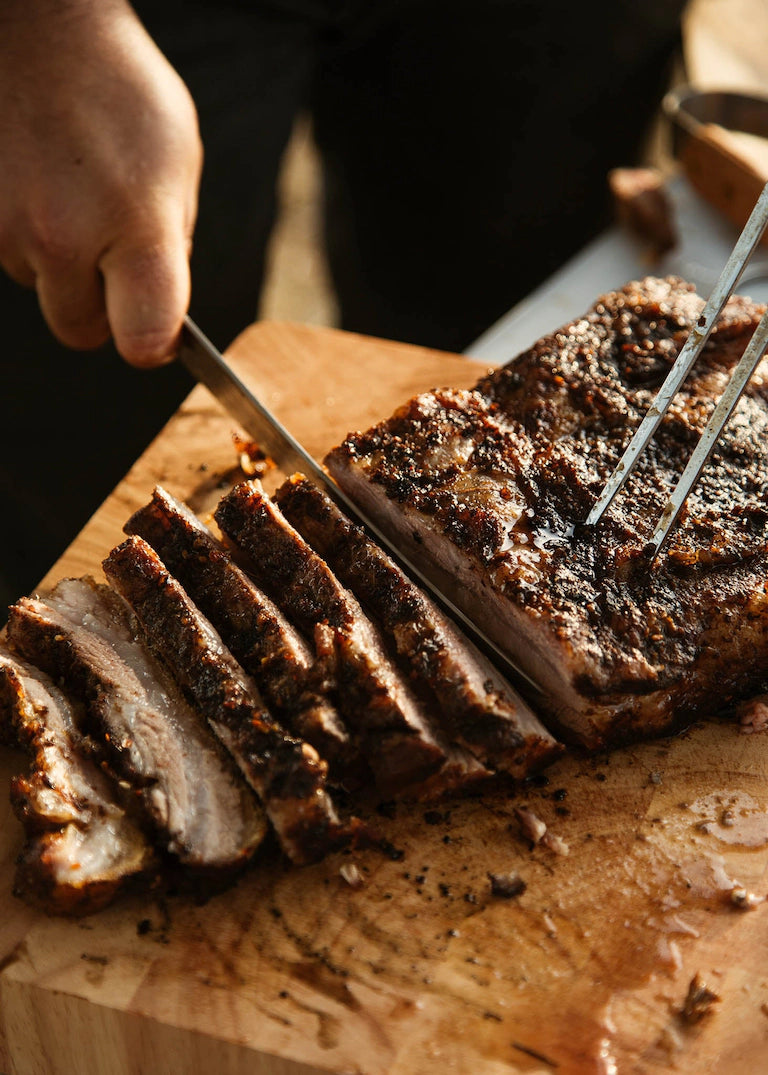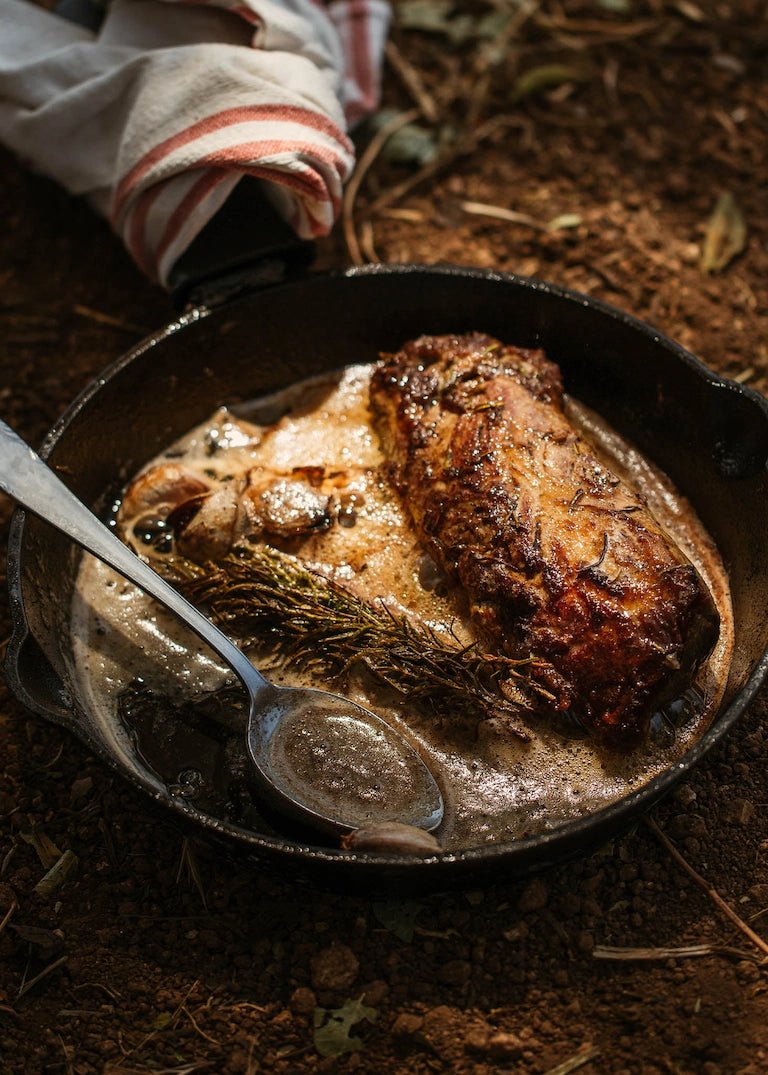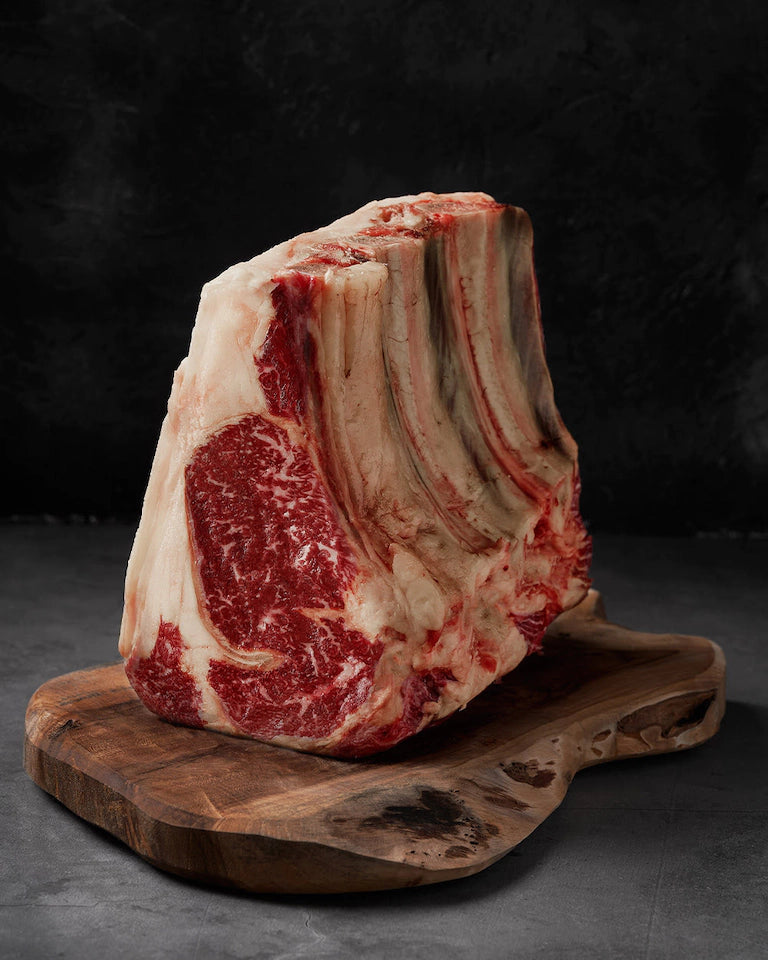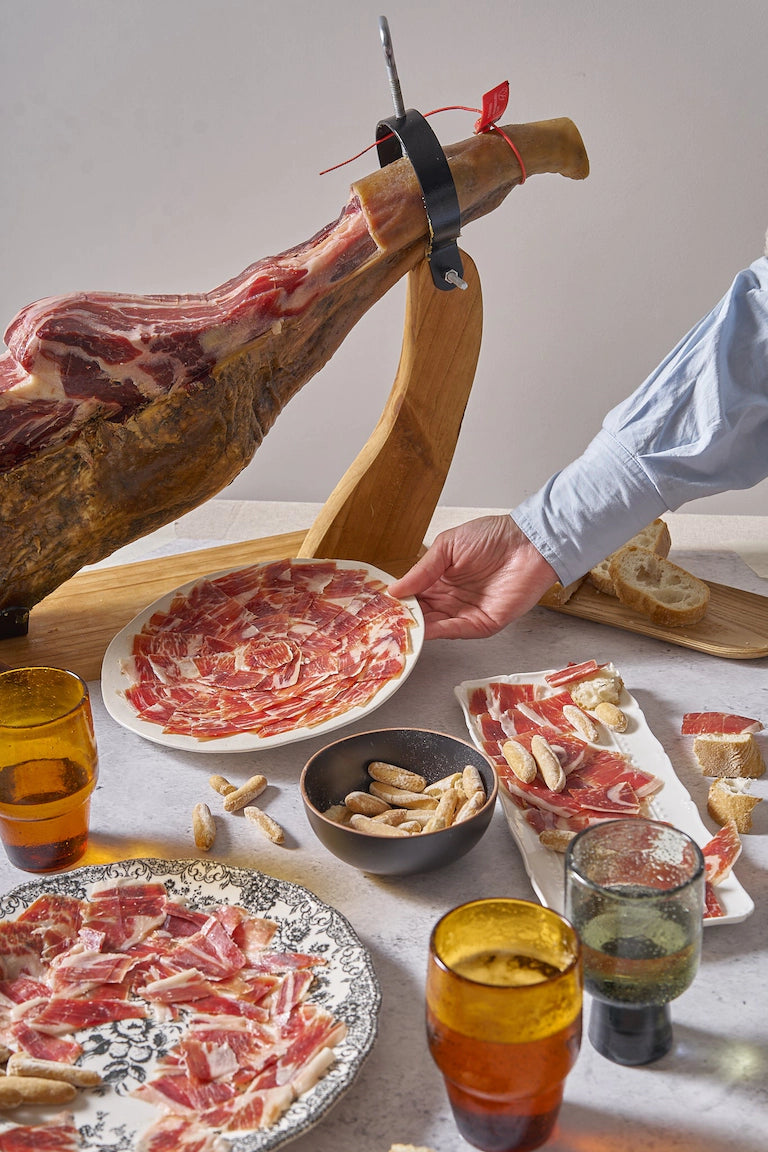
Forget everything you know about pork—Ibérico is literally a whole different animal.
When cooking with supermarket pork, do you brine it so it doesn’t dry out? Do you slather it in rich sauces to compensate for its leanness, or marinate it overnight so it tastes like, well, something? To borrow from the proverb, you can put lipstick on a pig, but it’s still a pig.
But Ibérico isn’t a regular pig, and it requires no such band-aids or enhancers to be incredibly delicious. It is the Rolls Royce of pork, prized for its deep, nutty flavor and hypnotic swirls of intramuscular fat—the same type of heart-healthy unsaturated fat present in extra-virgin olive oil.
Not only is the cerdo ibérico closer to the wild boar genetically than it is to the domesticated pig, its lifestyle is completely different: Never confined to pens or crates, it is athletic, ranging over the dehesas (oak-shaded grasslands) of southern Spain and feeding on acorns, grubs, and plants. The result is pork the way it’s supposed to taste—or perhaps used to taste.
Because Ibérico is quite literally a different animal, it shouldn’t be cooked like standard pork. Here are some chef-approved pointers to remember when you head into the kitchen.
- Go minimal. Unlike supermarket pork, which benefits greatly from brining or marinating, Ibérico is juicy and flavorful as is. Sure, a bath in aromatic sauces and spices will add pizzazz to Ibérico—if you’re a marinade lover, soak away!—but this step is by no means necessary.
- Grease your pan Spanish style. Instead of reaching for the oil, use a knife to trim a bit of fat from the pork, then heat that to coat the pan before adding your meat. Because Ibérico fat is so high in oleic and unsaturated fats, it behaves much like oil. Except, of course, it’s much more flavorful. This liquid gold is also great for frying eggs and adding porky richness to beans.
- Crank the heat. Supermarket pork can be a pain to cook. If the heat is too low, the meat doesn’t brown; crank it too high, and the meat dries out. Not Ibérico, which is far more forgiving and thrives in a screaming-hot pan, oven, or grill. With enough heat, all that gorgeous marbling makes the edges crisp up like bacon and keeps the interior tender and juicy like a good steak.
- Say no to well done. Cook Ibérico as you would top-quality beef: not too long. If you like your steak medium-rare, that’s how you’ll like your Ibérico; same goes for medium or medium-well. But for the sake of our abuelas rolling in their graves, don’t venture into well-done territory. We know, we know, “undercooked” pork is still controversial somehow, even if an average of 15 measly trichinosis cases are reported nationwide per year.
- Cut against the grain. As with any meat, the way you slice it can change the flavor and texture. Notice which way the muscle fibers go, then position your knife perpendicular to them and make clean diagonal slices. You can gussy things up by fanning out the slices and pouring any accumulated juices over the top.
- Red or bust. Spring for a bold red wine that complements Ibérico’s umami punch. A tempranillo blend from Rioja or Ribera del Duero is the traditional choice here, but New World shirazes, zinfandels, and cabernets are also solid bets. More adventurous enophiles should try Ibérico with skin-contact white and orange wines, whose bristly tannins are subdued by the fat.
Now that you've got the basics down pat, click here to get cooking with Campo Grande heirloom Ibérico now!
